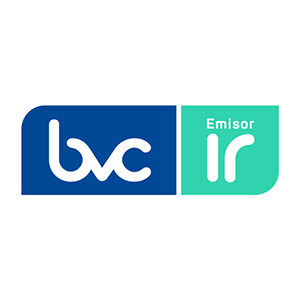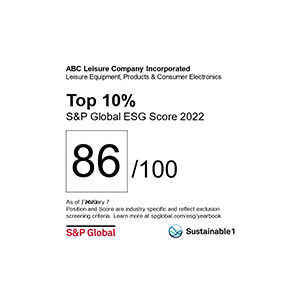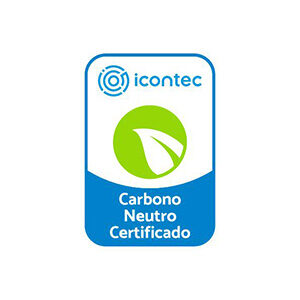At Celsia, we have a Transmission and Distribution (T&D) Infrastructure that allows us to integrate new energy sources and ensure delivery to end clients, guaranteeing the continuity and quality of the service.
GRI (3-3) Electric energy is an essential service that allows and leverages the development of the country. Our Company works under continuous-improvement criteria that allow us to satisfy our Stakeholders, contributing to the Organization’s sustainability and profitability. Our objective is to operate the electrical infrastructure efficiently, supported by technology to achieve operational excellence, thus complying with the Service-Quality Indicators that characterize us.
Our Management
GRI (3-3)
- We invest in new infrastructure, we replace those that are obsolete, we update our technology, with which we ensure the integration of new distributed-energy sources, good quality indexes and service continuity.
- We manage the assets and their contingencies in accordance with the Company’s Strategic and Operational Risks, which allows us to reduce impacts and, thus, improve the efficiency and profitability of the business to meet our MEGA.
- We carry out technological and prospective monitoring of the business to modernize and improve efficiency, availability, quality and innovate in the network and its related services.
- We analyze the new trends in the sector to deliver the energy that our clients want through the development of smart grids, microgrids, distributed generation and other technological advances that are taking place nationally and internationally.
Infrastructure
Clients
Transformers and Substations
Transmission
DJSI (2.7.1), GRI (EU4), SASB (IF-EU-000.C)
Transmission Valle
Swipe right to see all the contents of the table.
Length of the Transmission Network | Unit of Measure | 2018 | 2019 | 2020 | 2021 | 2022 |
|---|---|---|---|---|---|---|
Average Length | Km | 285.33 | 274 | 274 | 274 | 274 |
Total Length (≥220 kV) | Km | 291 | 274 | 274 | 274 | 274 |
Transmission Central America
Length of the Transmission Network | Unit of Measure | 2019 | 2020 | 2021 | 2022 |
|---|---|---|---|---|---|
Total Length (≤220 kV) | Km | 17 | 17 | 17 | 17 |
Distribution
Reliability and Quality
Technical Losses
Technical losses are inherent to the provision of the service; they occur mainly due to the heating that occurs when electrical energy passes through transmission lines and transformers.
Total Losses
The Total Loss Indicator (TLI) measures the integrated level of loss from the 115 kV level. The total losses correspond to the total energy that is lost due to technical and non-technical losses, the latter representing the energy lost due to improper manipulation of equipment or billing systems.
System Reliability
Maintaining system reliability – so that our clients have a reliable, continuous energy service – means that our efforts are focused on strengthening our network and on the improvement and performance of our assets.
SAIFI, SAIDI and CAIDI Indicators
SAIFI
The System Average Interruption Frequency Index (SAIFI) measures the frequency of power-service interruptions: that is, the number of interruptions that – on average – a client connected to our network receives in a year.
SAIDI
The System Average Interruption Duration Index (SAIDI) measures the duration of power interruptions; that is, the total number of hours per year that a client connected to our network does not have service.
CAIDI
SASB (IF-EU-550a.2) The Client Average Interruption Duration Index (CAIDI) represents the average time required to restore service once the interruption occurs.
Client Average Interruption Duration Index (CAIDI) | Unit of Measure | 2021 | 2022 |
|---|---|---|---|
Valle del Cauca | CAIDI | 1,487 | 1,56 |
Tolima | CAIDI | 1,629 | 2,04 |
Cetsa | CAIDI | 0,834 | 0,72 |
Although there is a deviation in the Indicator, in the course of 2022 ,there were no relevant events in the system that affected our clients.
Smart Meters
Through the Advanced Metering Infrastructure (AMI) Project, and as part of our Loss-Reduction Plan, we installed a total of 2,660 smart meters in 2022, in Valle and Tolima, which allowed us to achieve a cumulative number of 113,373 smart meters connected to our networks.
What is smart metering? It is the latest technology available that allows the Company not only to have a more-accurate record of client consumption, but also to develop new products and services to make the most of the information that is beginning to be collected through these devices.
Benefits for our clients:
- They have a more-precise measurement of their energy consumption.
- They allow the reading and suspension of the service or – if it is suspended and the system registers the payment – we can reconnect it in less time, all this remotely.
- We will be able to detect the damages that appear in the network in less time, which means that we will attend to them in a more agile manner.
- They will show an improvement in the quality of the service, since in the areas to which we have previously brought this technology, we have carried out a remodeling of medium- and low-voltage networks.
Impact of Climate Change
TCFD: Strategy – b) We are aware of the importance of climate change in all of our businesses, which is why we identify new risks that may impact some important aspects of the expansion and operation of the network, including:
- Alteration in the quality of service to our clients, due to heavy rains and strong winds.
- Impact on the stability of the transmission and distribution structures, due to the increase and severity of extreme phenomena, such as tropical cyclones.
- Impact on electrical substations, due to the rise in the sea level and flooding.
- Possible damage to the T&D Infrastructure, alteration of line maintenance activities, difficulty in air access for repair activities in inaccessible sites, alteration in the health of line and substation operators, possible increase in technical energy losses. In addition, forest fires can generate alterations in the operation of lines and substations (interruption of service), due to the increase in the temperature variation, changes in the force and direction of the wind.
However, we also find opportunities and positive results in initiatives implemented, thanks to the anticipation with which action is taken, driven by climate change; for example, energy-efficiency solutions and demand management.
For the efficient consumption product, framed within the Demand-Response initiatives, there was a saving of 63.17 MWh, which represents a reduction of 166.09 TonCO2.
For the efficient consumption product, framed within the Demand-Response initiatives, there was a saving of 63.17 MWh, which represents a reduction of 166.09 TonCO2.
Principal Results in 2022
GRI (3-3)
The investments made in Infrastructure and the new way of remunerating the assets by the regulator showed a growth of 24%, compared to the income of the previous year.
Investments worth COP 249,730 million were made in compliance with the Investment Plan approved within the framework of CREG Resolution 015 of 2018, which allowed us to maintain the indicators of quality and losses at optimal values.
During 2022 the results of the indicators were the following
Total Loss-Reduction Plan Celsia Colombia
Presented an indicator of 9.36%, exceeding the expected target by 0.02% (9.38%).
Presented an indicator of 12.89%, exceeding the expected goal by 1.83% (14.72%).
Quality Plan (SAIDI)
Valle
Presented an indicator of 10.29 hours, improving the goal approved by the regulator of 10.59 hours.
Tolima
Presented an indicator of 40.79 hours, improving the goal approved by the regulator of 58.14 hours.
CETSA
Presented an indicator of 1.52 hours, improving the goal of 2.24 hours approved by the regulator.
We obtained excellent results in the transformers impacted by the Optimus Project, which improved their quality indices by up to 25%. This project allows us to know, in real time, information about failures in the Company’s Distribution Transformers, without depending on client calls, using sensors in the secondary outputs of the Distribution Transformers.
Investment in T&D Innovation:
- We are part of the energy transformation, by modernizing the infrastructure of our networks. We have the AMI Project as the spearhead of this transformation, which presented the number of smart meters installed for 113,373 clients, with an investment in 2022 of COP 52.000 Billion, which included organic meters, façade meters, and centralized metering.
- The Digital Network (Red Digital, in Spanish) Project made investments for a value of COP 14.951 Billion, with which it has been possible to promote R&D+i for the digital transformation of the network and a sandbox, demand-response regulation, which provides good practices and technology references.
- Alliances with various suppliers and academia were strengthened through different initiatives with the Universidad del Valle, the National University of Colombia and allies such as IGT, Micol, PTI, Metrum and Colombia Inteligente, which encourage capacity building through participation in collaborative groups and energy clusters.
- Resources were managed with IFC and EPRI, which will allow the digital transformation of the network to be promoted.
for power transmission and distribution and for photovoltaic farms and roofs in Valle del Cauca and Tolima.
With this project we seek the transformation to enable a digitized, distributed, democratized and autonomous network in the Departments of Valle del Cauca and Tolima.
GRI (3-3) Short-, Medium- and Long-Term Objectives:
Short Term(0 to 2 years)
- Make investments of more than COP 826.000 Billion in projects that improve service-quality indices, expand coverage and reduce the level of energy losses, with the purpose of exceeding regulatory goals.
- Put Tolú Viejo (230 kV) into commercial operation in the first half of 2024 and the Istanbul Substation (115 KV) in the second half of 2023.
- Participate in summons that allow new growth opportunities in the Transmission and Distribution Business:
- The Carreto 500 kV Substation.
- The Pasacaballos 230 kV Substation.
- The Huila 230 kV Substation.
- Achieve an improvement in the quality of the SAIDI and SAIFI service by implementing a technological infrastructure in Valle and Tolima, which allows us autonomous network operation.
- Design and implement the pilot of a new Distribution System Operator (DSO) that guarantees the efficient, safe operation of the Distribution System.
- Develop models and algorithms for data analytics and artificial intelligence for the operation, based on information from the new measurement sensors, loss level, location and operating conditions of the digital network.
Medium Term(3 to 5 years)
- Make investments for more than COP 1.6 Trillion in projects that improve service-quality indices, expand coverage, and reduce the level of energy losses, with the purpose of exceeding regulatory goals.
- Implement new information and communication technologies in substations and networks, to support the transformation of the network towards digital, which will allow democratization and opening up to new sources of distributed generation, storage, aligned with the increase in expected consumption.
- Reduce the value paid for compensation due to the quality of service, thanks to the implementation of the operation of an autonomous network that will reduce the restoration and replacement times of failures.
- Put the substations into operation:
- The Pacific 230 kV.
- The Las Palmas 115 kV.
- The Escobal 115 kV.
- The Arreboles 115 kV.
Long Term(6 or more years)
In accordance with the planning horizons of the Mining and Energy Planning Unit (UPME, in Spanish), Celsia has planned works in the STN and STR in order to increase the reliability of the service in the Departments of Valle del Cauca and Tolima, as well as allow the connection of large consumers, larger generation projects and the organic growth of demand, among which are:
- Expansion of the Alférez II Substation (115 [kV]).
- The La Uribe Substation (500/220/115 [kV]).
- The La Uribe Substation (500/220/115 [kV]).
- Expansion of the Cerrito Substation (220 [kV]).
- FACTS installation in the Cajamarca 115 kV Substation – first stage.
- Second transformer in the San Felipe Substation (220/115 kV)
- Opening of the Prado – Tenay 115 kV circuit to connect it to the Natagaima 115 kV Substation.
- The Arreboles 220 kV Substation.
CREG: The Energy and Gas Regulation Commission.
Demand Response: This allows commercial and industrial consumers to respond to market signals by increasing or reducing their energy consumption.
Smart Meters: Advanced Metering Infrastructure (AMI), which allows the Company to have a more-accurate record of client consumption and encourages it to develop new products and services to make the most of the information that is beginning to be collected through these equipment.
DDDAN: Digitized, Distributed, Democratized and Autonomous Network..
SAIFI (The System Average Interruption Frequency Index): A quality indicator that measures the average interruption frequency of the system.
SAIDI (The System Average Interruption Duration Index): A quality indicator that measures the average duration of system interruption.
National Transmission System (STN, in Spanish): This is the interconnected system of electric-power transmission made up of the set of lines, with their corresponding connection modules, which operate at voltages equal to or greater than 220 kV.
Regional Transmission System (STR, in Spanish): This is the interconnected system of electric power transmission made up of regional or interregional transmission networks. In addition, it is made up of the set of lines and substations with their associated equipment, which operate at voltages of less than 220 kV and do not belong to a local distribution system.
MEGA: The large and ambitious goal (Meta Grande y Ambiciosa) that provides strategic guidelines to the Organization.
Demand Management: A set of actions designed to manage and optimize the energy consumption of a specific point, in order to reduce costs, such as network charges or general system charges, including taxes.






